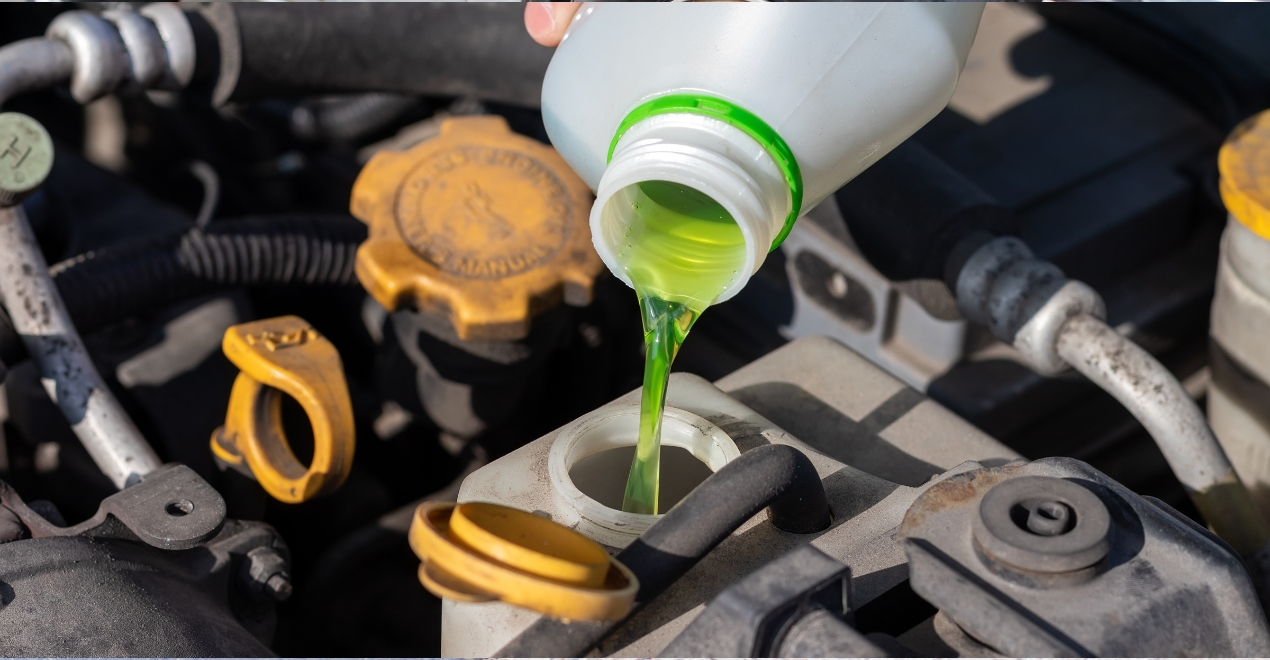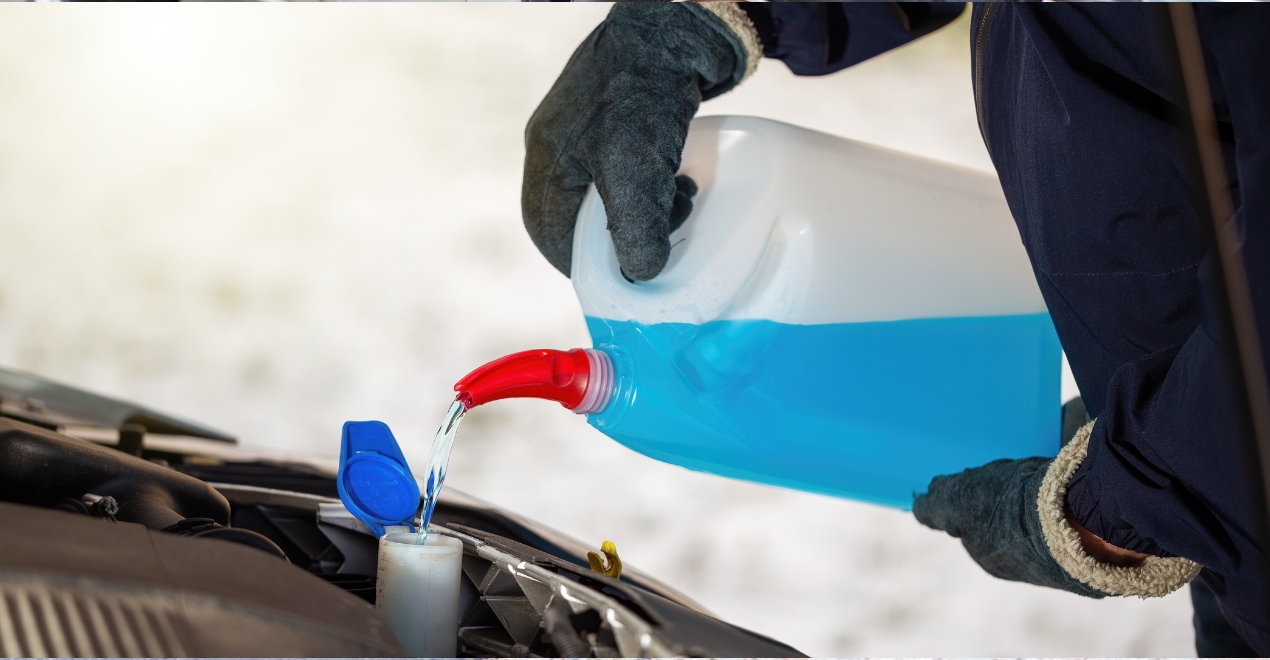Ensuring your vehicle’s coolant system is functioning properly is crucial for maintaining the overall health of your engine. A coolant leak can lead to overheating, engine damage, and costly repairs. This comprehensive guide will help you understand how to identify if your coolant is leaking, the signs to look out for, and the necessary steps to take if you suspect a leak. Experiencing a coolant leak? Don’t wait! Contact Crossroads Helpline today for expert assistance right at your doorstep.
Understanding the Importance of Coolant

Coolant, also known as antifreeze, plays a vital role in regulating your engine’s temperature. It circulates through the engine and absorbs excess heat, which is then dissipated through the radiator. Coolant also prevents the engine from freezing in cold weather by lowering the freezing point of the liquid in the cooling system. Without adequate coolant, your engine can overheat, leading to significant damage. Therefore, it is essential to monitor your coolant levels and ensure there are no leaks in the system.
Common Signs of a Coolant Leak
Recognizing the early signs of a coolant leak can save you from expensive repairs and potential engine failure. Here are the most common indicators that your coolant may be leaking:
1. Low Coolant Level
One of the first signs of a coolant leak is a consistently low coolant level in the reservoir. If you find yourself frequently topping off the coolant, there is likely a leak somewhere in the system. Regularly check the coolant level in the overflow tank and the radiator when the engine is cool.
2. Visible Puddles or Stains
Coolant leaks often leave visible puddles or stains under your vehicle. Coolant is typically a bright green, yellow, or pink color, making it easier to identify. If you notice these colored puddles where your car is parked, it’s a strong indication of a leak.
3. Overheating Engine
An overheating engine is a clear sign that your cooling system is not functioning correctly. If the coolant is leaking, it cannot properly absorb and dissipate heat, causing the engine temperature to rise. Pay attention to the temperature gauge on your dashboard and watch for any warning lights.
4. Sweet Smell
Coolant has a distinct sweet smell due to the presence of ethylene glycol. If you detect a sweet odor inside or outside your vehicle, it could indicate a coolant leak. This smell is often more noticeable when the engine is hot.
5. Steam or Smoke
Steam or smoke coming from under the hood is a serious sign of a coolant leak. This typically occurs when the coolant leaks onto hot engine components, causing it to evaporate quickly. If you see steam, pull over immediately and turn off the engine to avoid further damage.
Diagnosing the Source of the Leak

Once you’ve identified signs of a coolant leak, the next step is to determine the source. Coolant leaks can originate from various parts of the cooling system. Here are some common areas to inspect:
1. Radiator
The radiator is a common source of leaks, especially in older vehicles. Check for any cracks, corrosion, or damage on the radiator. Leaks often occur at the seams or where the radiator hoses connect.
2. Hoses
Inspect all the hoses connected to the cooling system. Look for any signs of wear, cracks, or loose clamps. Coolant hoses can deteriorate over time, leading to leaks.
3. Water Pump
The water pump circulates coolant through the engine. A faulty water pump can develop leaks around the gasket or the shaft seal. Look for coolant residue or moisture near the water pump.
4. Head Gasket
A blown head gasket is a severe issue that can cause coolant to leak into the engine oil or the combustion chambers. This can lead to white smoke from the exhaust, a milky appearance in the oil, or a drop in coolant levels.
5. Heater Core
The heater core is responsible for providing heat to the cabin. It is located inside the dashboard and can develop leaks. If you notice a sweet smell inside the car or damp carpeting, the heater core may be the culprit.
Steps to Confirm a Coolant Leak
Confirming a coolant leak requires a systematic approach. Here are the steps to follow:
1. Pressure Test
A pressure test involves using a special tool to pressurize the cooling system and check for leaks. This test can help identify leaks that may not be visible when the engine is cool. It is best performed by a professional mechanic.
2. Visual Inspection
Perform a thorough visual inspection of the cooling system, including the radiator, hoses, water pump, and other components. Look for any signs of moisture, corrosion, or damage.
3. UV Dye Test
A UV dye test involves adding a special dye to the coolant and using a UV light to detect leaks. The dye will glow under the UV light, making it easier to locate the source of the leak.
4. Compression Test
A compression test can help determine if the head gasket is leaking. This test measures the pressure in the cylinders and can reveal issues with the gasket.
Repairing a Coolant Leak

Once you’ve identified the source of the coolant leak, it’s time to take appropriate action. Depending on the severity and location of the leak, you may need to perform repairs yourself or seek professional help.
1. Radiator Repairs
For minor radiator leaks, you can use a commercial radiator sealant to temporarily fix the issue. However, this is not a permanent solution, and the radiator may need to be replaced or professionally repaired.
2. Hose Replacement
If the leak is coming from a hose, you will need to replace the damaged hose. Ensure you use the correct type of hose and secure it with proper clamps.
3. Water Pump Replacement
A leaking water pump will need to be replaced. This can be a complex task, so it is recommended to have a professional mechanic handle the repair.
4. Head Gasket Repair
Repairing a blown head gasket is a significant job that often requires disassembling parts of the engine. It is best to have this repair performed by an experienced mechanic.
5. Heater Core Replacement
Replacing a leaking heater core can be labor-intensive due to its location inside the dashboard. Professional assistance is usually required for this repair.
Preventing Future Coolant Leaks
Preventive maintenance is key to avoiding future coolant leaks. Here are some tips to help keep your cooling system in top condition:
1. Regular Inspections
Perform regular inspections of the cooling system components, including the radiator, hoses, and water pump. Look for any signs of wear, corrosion, or damage.
2. Coolant Flushes
Schedule routine coolant flushes to remove old coolant and debris from the system. This helps prevent clogs and corrosion that can lead to leaks.
3. Use the Right Coolant
Always use the type of coolant recommended by your vehicle manufacturer. Mixing different types of coolant can cause chemical reactions that lead to corrosion and leaks.
4. Monitor Temperature Gauge
Keep an eye on the temperature gauge on your dashboard. If you notice the engine running hotter than usual, investigate the cause immediately.
5. Address Leaks Promptly
If you suspect a coolant leak, address it promptly. Ignoring a leak can lead to more significant issues and costly repairs.
Conclusion
A coolant leak is a serious issue that can lead to engine overheating and damage. By understanding the signs of a coolant leak, diagnosing the source, and taking appropriate action, you can prevent costly repairs and ensure your vehicle’s cooling system functions properly. Regular maintenance and inspections are key to keeping your engine running smoothly and avoiding the headaches associated with coolant leaks. If you’re ever in doubt, don’t hesitate to seek the assistance of a professional mechanic to diagnose and repair the problem.

